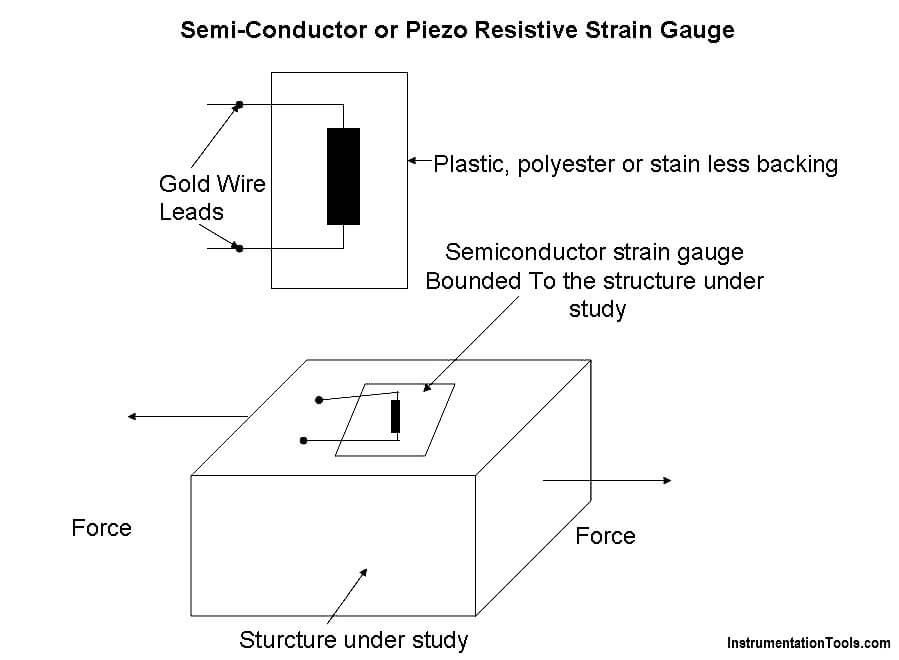These gauges are directly bonded (that is pasted) on the surface of the structure under study. Hence they are termed as bonded strain gauges.
The three types of bonded strain gauges are
The arrangement of a semi-conductor strain gauge is as follows:
The sensing element is rectangular filament made as a wafer from silicon or geranium crystals.
To these crystals, boron is added to get some desired properties and this process is called doping and the crystals are called doped crystals.
This sensing element is attched to a plastics or stainless steel backing. Leads made of gold are drawn out from the sensing element for electrically connecting the strain gauge to a measuring instrument (wheat stone bridge).
There are two types of sensing element namely:

With the help of an adhesive material, the strain gauge is pasted/bonded on the structure under study.
Now the structure is subjected to a force (tensile or compresive). Due to the force, the structure will change the dimension.
As the strain gauge is bonded to the structure, the stain gauge will also undergo change in both in length and cross-section (that is, it strained).
When the sensing element (crystal) of the semiconductor strain gauge is strained, its resistivity changes contributing to a change in the resistance of the strain gauge.
The change in the resistance of the strain gauge is measured using a wheat stone bridge.
This change in resistance of the strain gauge becomes a measure of the extent to which the structure is strained and a measure of the applied force when calibrated.
Learn the example of flip-flop PLC program for lamps application using the ladder logic to…
In this article, you will learn the STAR DELTA programming using PLC controller to start…
Lube oil consoles of rotary equipment packages in industrial process plants are usually equipped with…
Rotating equipment packages such as pumps, compressors, turbines need the lube oil consoles for their…
This article explains how to blink lights in ladder logic with a detailed explanation video…
In this article, a simple example will teach you the conversion from Boolean algebra to…